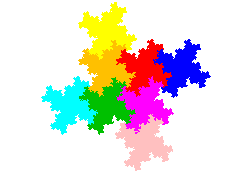
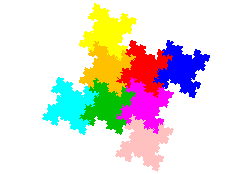
Gary Teachout shows on his page Fractal Space Filling Curves 2002 a rep-8 tile, which is the limit of an L-system, which he describes as An Eight Tile Cross. This figure is easy to reverse engineer as an IFS. It turns out to be a member of the set of polyPLET fractALS (tiles in which the space group is that of the square), and it appears to be the only arrangement of 8 elements which has c4 symmetry. Hence I refer to these figures are cyclic octopletals.
There are two versions; one in which the 8 elements are directly similar to the overall figure, and in in which they are inversely similar. It is the latter (the right hand image) that Gary Teachout presents.


Additional fractals can readily be derived from these. As there is no central element it is not possible to produce a propellor in the strict sense, but equivalent fractals can be produced either using the centre 4 elements as the centre, or having no centre at all. In the former case there are 4 distinct tiles (not shown). In the latter case there are the following 2 distinct tiles.
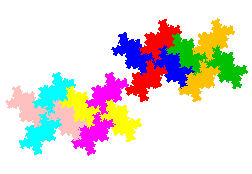
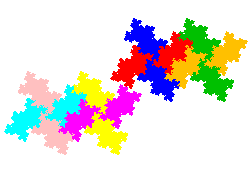
Similarly it is not possible to produce a teardrop in the strict sense, but equivalent tiles can be produced. (The figures in which the central 4 elements are treated as the centre are disconnected.)
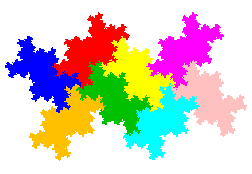
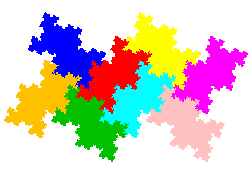
As the central two elements of these figures have combined c4-symmetry they can be rotated by 90° to give alternative IFSs with the same attractors.
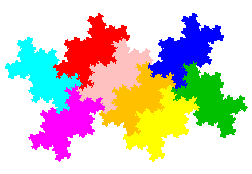
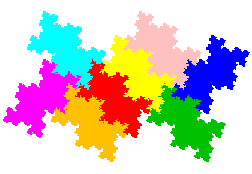
From these half-figures can be produced.
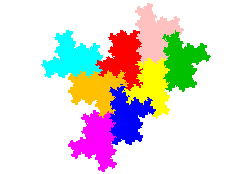
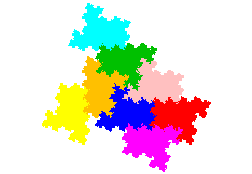
The cyclic octopletals are composites of the twindragon and a rep-4 square. (They are not members of the regular set of composite pletals, unless this set is much richer than I know it to be.) Composition of IFSs is non-commutative, and composition of the same rep-4 square with the twin dragon gives the following two tiles.
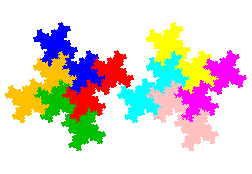
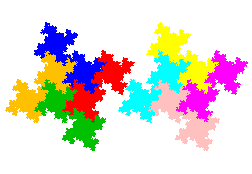
There are many other tiles which can be obtained from various of the above. Most have self-intersecting boundaries and voids. Two, which do not have voids, are shown below.
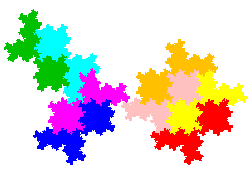
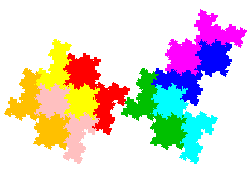
Sources: The trans-cyclic octopletal is taken from Gary Teachout's Fractal Space Filling Curves 2002.
References:
© 2002 Stewart R. Hinsley